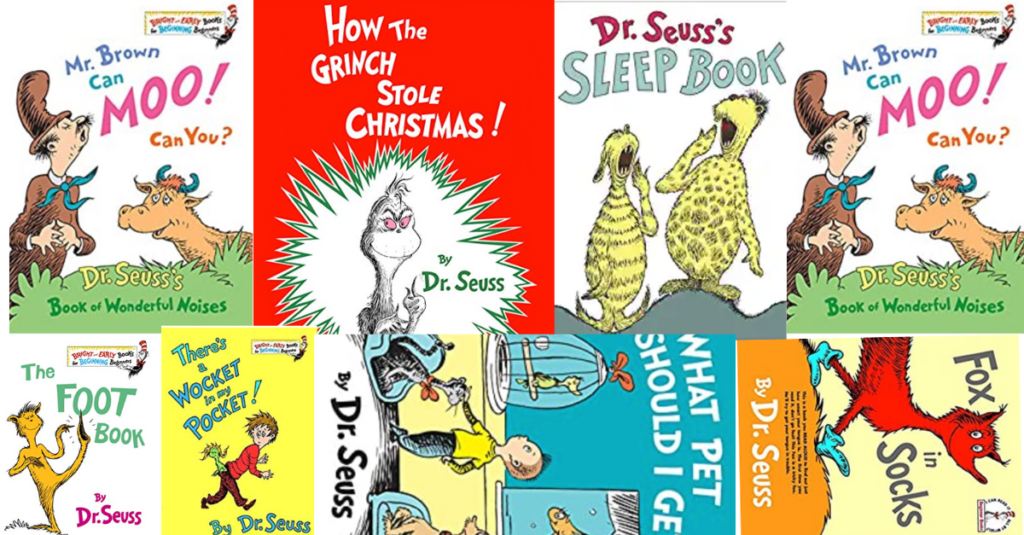Dr. Seuss was one of the most beloved children’s authors of all time whose books have captivated generations with their vivid illustrations and clever rhymes. From classics such as The Cat in the Hat to posthumous releases like What Pet Should I Get? Dr. Seuss has created an entire world of stories that are both fun and educational for kids. The purpose of this post is to explore the lesser-known facts about Dr. Seuss that are often overlooked in favor of his more famous works.
Theodor Geisel, or as he is better known, Dr. Seuss, was born in 1904 and raised in Springfield, Massachusetts. He attended Dartmouth College and went on to become an acclaimed cartoonist and writer before writing any of his famous children’s books.
Dr. Seuss also had an interesting hobby of collecting hats from around the world. He had over 200 hats in his collection, some of which he wore in public. He even wrote a book about hats called The 500 Hats of Bartholomew Cubbins.
Finally, it is interesting to note that Dr. Seuss’ first children’s book was rejected by 27 publishers before finally being accepted and published in 1937. Below are answers to some popular questions people ask about Dr. Seuss works and life.
Why are Dr. Seuss books so good?
Dr. Seuss’s books are so good because they combine vivid and imaginative illustrations with clever rhymes that make them both fun and educational for children. His stories often contain moral lessons or encourage an open-minded attitude toward trying new things.
What is the best Dr. Seuss story?
This is hard to answer. In fact, the best Dr. Seuss story is a highly subjective question, as everyone has their own unique opinion on what makes the perfect Dr. Seuss story. Some of his most popular titles include “The Cat in the Hat,” “Green Eggs and Ham,” and “One Fish Two Fish Red Fish Blue Fish.” At a personal level, I like How the Grinch Stole Christmas.
What are the 6 canceled Dr. Seuss’ books?
The six canceled Dr. Seuss books are: And to Think That I Saw It on Mulberry Street, If I Ran the Zoo, McElligot’s Pool, On Beyond Zebra!, Scrambled Eggs Super! and The Cat’s Quizzer. These stories were based on racial stereotypes and hurtful imagery and have been removed from circulation by Dr. Seuss Enterprises, the company that holds the rights to Dr. Seuss’ works.
The decision to cancel these stories came after a review of the author’s entire catalog in light of recent conversations about racism and representation in children’s literature. Despite this unfortunate circumstance, Dr. Seuss’ work still stands as an enduring example of creativity.
What is the most sold Dr. Seuss book?
The most-sold Dr. Seuss book is Green Eggs and Ham. First published in 1960, this classic story follows Sam-I-Am as he tries to convince a nameless character to try green eggs and ham. With its playful rhymes and distinctive illustrations, it has become one of the best-selling children’s books of all time
Why are the cat and the hat Cancelled?
The Cat in the Hat has been canceled due to racial stereotypes portrayed in the illustrations. Dr. Seuss Enterprises, the company that holds the rights to Dr. Seuss’ work, conducted an extensive review of his catalog and decided to remove this story from circulation in light of recent conversations about racism and representation in children’s literature.
Which Dr. Seuss books were made into movies?
Several of Dr. Seuss’ books have been adapted into movies over the years, including The Cat in the Hat (2003), How The Grinch Stole Christmas (2000), and Horton Hears a Who! (2008) and The Lorax (2012).
Other titles such as Green Eggs and Ham and The Cat in the Hat Comes Back have also been adapted into animated TV specials. These films feature colorful animations and delightful storylines that stay true to the original works while still bringing something new to the table. Each adaptation is sure to entertain viewers of all ages!
What is Dr. Seuss most famous for?
Dr. Seuss is most famous for creating delightful stories that combine vivid illustrations with clever rhymes, making them both fun and educational for children. His books often contain moral lessons or encourage an open-minded attitude toward trying new things.
He has written over 60 books, many of which are now classics, such as The Cat in the Hat, Green Eggs and Ham, Horton Hears a Who!, and The Lorax. He is also known for his numerous adaptations into film, making him one of the most beloved children’s authors of all time.
What lessons do Dr. Seuss’ stories teach?
Dr. Seuss stories often contain moral lessons for children, such as the importance of embracing differences and being open-minded about trying new things. They can also teach valuable life lessons, such as looking out for others, believing in yourself and your abilities, working together to solve problems, and standing up for what is right.
His stories are often seen as giving children the courage to be themselves, no matter how different they may be. They also encourage creativity and self-expression by inviting readers into fantastical worlds of colorful characters and imaginative stories.
What is the last Dr. Seuss book?
The last book published in Dr. Seuss’s lifetime was Oh, the Places You’ll Go! This beloved classic follows a young character as they embark on an exciting journey, and is full of uplifting advice and encouragement to help readers reach their goals.
Which of Dr. Seuss’s books were published posthumously?
Dr. Seuss’s posthumous book, What Pet Should I Get? was published in 2015 and is based on a previously unpublished text written by the author in the 1950s. The story follows two siblings who must make an important decision about what type of pet to get for their family. Other posthumously published books include Horse Museum (2019), Dr Seuss’s Sleep Book (1989) and The Bippolo Seed and Other Lost Stories (2011).
What is Dr. Seuss’s message to children?
Dr. Seuss’s message to children is to be curious and to explore the world around them. He also encourages children to think for themselves and make informed decisions about their future. His stories often contain messages of self-confidence, inclusivity, and resilience, telling young readers that they have the power and potential within themselves to achieve great things. With his books being some of the most popular and beloved children’s literature of all time, it’s safe to say that his message has been heard loud and clear.
Conclusion
Dr. Seuss’s books are still as popular as ever, captivating children all over the world with their imaginative stories and wise morals. His message to kids is simple: be daring, believe in yourself, embrace differences, and explore the world around you.
Even after his passing, Dr. Seuss’s stories remain a powerful force, teaching kids the importance of being kind and compassionate while inspiring them with their vibrant illustrations and creative storylines. His timeless works will continue to be enjoyed by generations to come, offering valuable lessons that can help shape young minds into curious adventurers who strive for greatness.









